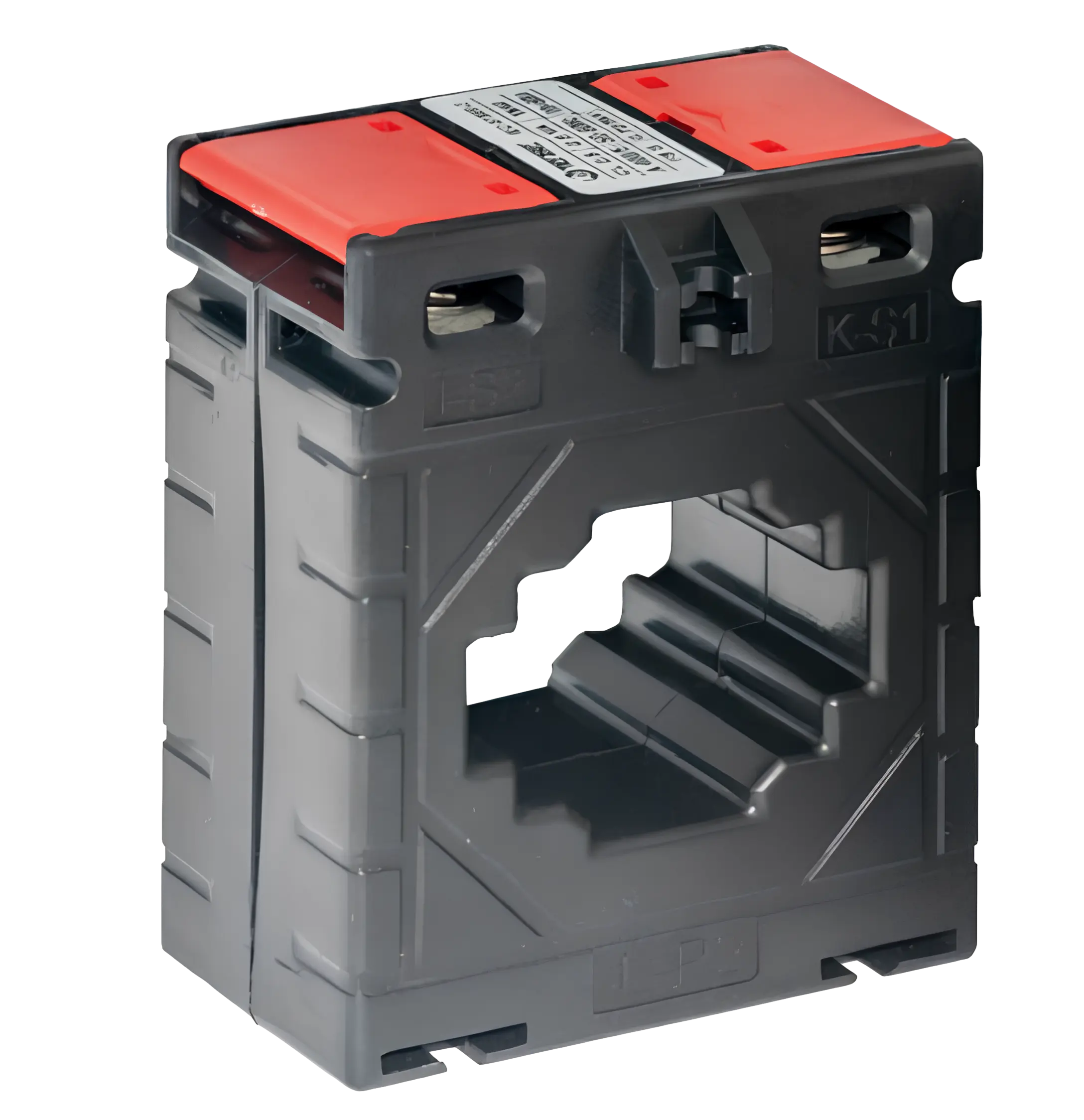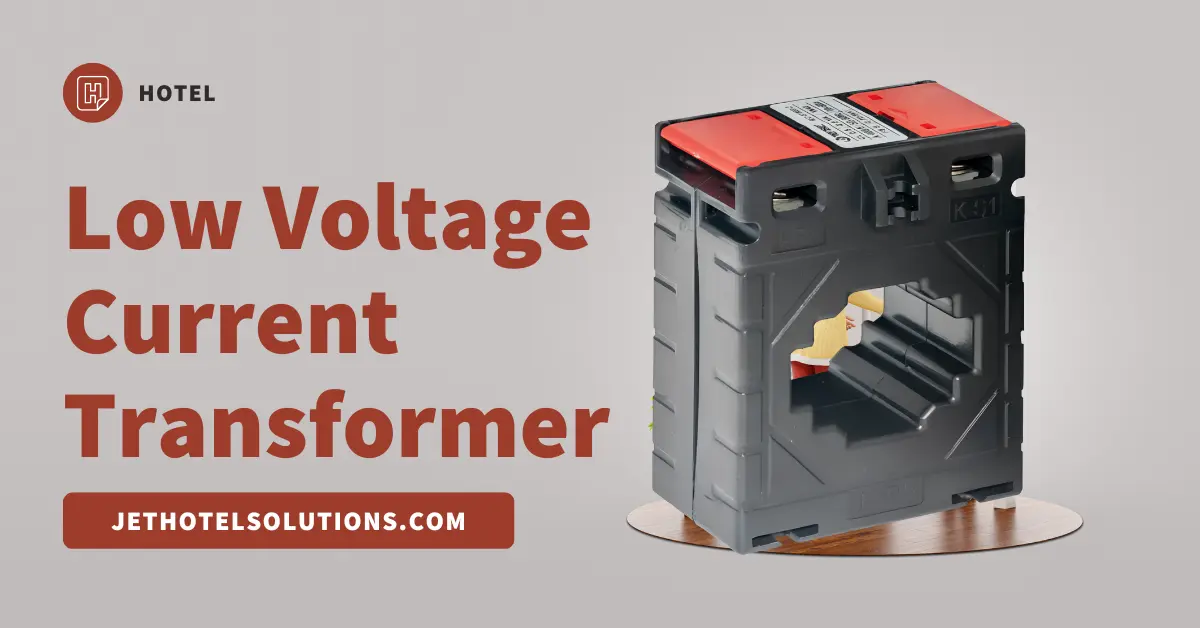As expansive facilities with significant electrical demands, hotels rely on power monitoring to track usage and performance. Low voltage current transformers are key enablers for collecting accurate current data from the many 120V, 208V, 480V and 600V circuits found in a typical hotel’s electrical system.
This in-depth guide explores low voltage current transformers and how they support effective and safe power monitoring within hotels.
What are Low Voltage Current Transformers?
 Low voltage current transformers (LVCTs) are instrument transformers designed for electrical systems less than 600V. They contain a primary winding, magnetic core, and secondary winding just like standard current transformers used in medium and high voltage applications.
Low voltage current transformers (LVCTs) are instrument transformers designed for electrical systems less than 600V. They contain a primary winding, magnetic core, and secondary winding just like standard current transformers used in medium and high voltage applications.
However, the materials and construction are optimized for monitoring low voltage circuits.
LVCTs provide the same basic functionality – reducing or transforming large primary currents down to standardized values compatible with metering and monitoring equipment. Typical secondary outputs are 1A or 5A.
This allows using common ammeters, transducers and relays without exceeding device capacities or tolerances at higher primary currents.
Key attributes of low voltage current transformers:
· Used on circuits less than 600V
· Built for compact sizes with smaller cores
· Contain windings and insulation for low voltage
· Convert large primary currents to 1A or 5A secondaries
· Allow using standard instruments on low voltage circuits
· Provide electrical isolation from primary circuit
Hotel Applications
LVCTs have many applications in hotels, including:
· Monitoring branch circuits and feeders
·.
Advantages of Using LVCTs in Hotels
Low voltage current transformers offer several key benefits that make them an excellent choice for hotel power monitoring applications:
Accurate measurements – The reduced 1A or 5A secondary current provides precise measurement of the actual primary current when using standard ammeters and monitoring devices.
Compact dimensions – With smaller magnetic cores, LVCTs take up less space than medium voltage units. This allows installation even in crowded electrical rooms and switchgear lineups.
Lower costs – Since less insulation and core materials are required, LVCTs can cost significantly less than medium voltage transformers. This makes comprehensive monitoring more affordable.
Flexible mounting – LVCTs are produced with various mounting styles to accommodate installation on cables, busbars, generator leads and motor feeders.
Standard outputs – The 1A or 5A output matches most metering and relay equipment for straightforward installation.
Wide measurement range – Properly sized LVCTs accurately measure primary currents from 10s to 10,000s of amps, covering typical low voltage loads.
Safety – LVCTs completely isolate monitoring equipment and personnel from dangerous primary system voltages.
How to Select the Right LVCTs
Choosing the optimal LVCTs for a particular hotel monitoring application depends on several factors:
Primary current – The maximum normal primary current during full load should be determined, then multiplied by 125% as a safety margin for transformer sizing.
Output – Standard secondary currents are 1A or 5A. Most meters and transducers accept these.
Accuracy class – For most branch circuits, 0.5% or 1% accuracy is sufficient. Feeders may require 0.2% for precision.
Burden – The power handling rating of the LVCT secondary must match the total burden of the connected monitoring devices.
Physical dimensions – The LVCT windows must accommodate the full conductor size including insulation.
Mounting – LVCTs are made for different mounting configurations – vertical or horizontal busbars, cables, motor leads, etc.
Environment – Indoor or outdoor rated LVCTs should be specified as needed.
As long as these factors are considered carefully for each measurement application, the LVCTs will provide accurate and reliable data.
LVCT Applications in Hotels
Low voltage current transformers support comprehensive monitoring of a hotel’s electrical distribution system:
Guest room circuits – Individual LVCTs on each branch circuit monitor currents to each room. Allows tracking usage room-by-room.
Lighting panels – 5A LVCTs on the main bus and major branch circuits provide data for analyzing lighting energy usage.
Kitchen panels – 1A LVCTs on individual circuits for ovens, grills and other large appliances identify waste or performance issues.
Laundry – 5A LVCTs on washer and dryers measure runtime and efficiency.
HVAC circuits – LVCTs on air handler and compressor motors current draw for optimization.
Pumps – LVCTs on water circulation and irrigation pumps help balance and schedule runtime.
Standby generators – 400-600V generators have LVCTs for metering, protection and diagnostics.
UPSs – LVCTs provide main and individual load monitoring for UPS power quality and runtime.
EV chargers – LVCTs enable tracking EV charger usage and analyzing loading impact.
The breadth of applications demonstrates the versatility of LVCTs for gaining visibility into hotel power consumption, even on low voltage circuits.
LVCT Monitoring Implementation
 To leverage low voltage current transformers most effectively, hotels should consider the following practices:
To leverage low voltage current transformers most effectively, hotels should consider the following practices:
Strategically locate LVCTs – Prioritize panels, loads and circuits that represent the bulk of power usage or have potential issues to catch problems early.
Select LVCTs judiciously – Make sure rated outputs and accuracy classes are appropriate for each monitoring point’s needs.
Follow best installation methods – Use short secondary wire runs, proper grounding and overcurrent protection to get reliable LVCT data.
Validate LVCT readings – Spot check primary and secondary values at commissioning to confirm proper transformer sizing and installation.
Use LVCTs for diagnostics – Trend and analyze LVCT data over time to detect developing circuit anomalies.
Integrate monitoring system – Collect LVCT data centrally using building management or dedicated power monitoring systems.
ProvideLVCT access – Allow facilities personnel direct access to LVCT outputs to simplify troubleshooting.
Keep LVCTs calibrated – Perform periodic field calibration of LVCT ratios and verify accuracy.
With thoughtful placement, sizing and usage of low voltage current transformers, hotels can unlock valuable insight into electrical system performance.
Conclusion
Low voltage current transformers present an accurate, flexible and cost-effective solution for monitoring the many 120V, 208V, 480V and 600V circuits throughout a hotel facility. Their reduced 1A or 5A secondary outputs integrate seamlessly with standard current-driven metering and data acquisition equipment. Strategic installation of LVCTs on priority branch circuits, feeders and loads enables detailed tracking of power usage. This supports identifying issues that impact guest experience, equipment reliability and energy expenditures. LVCTs are a key enabling technology for hotels to improve electrical system visibility and bolster operations through data-driven power management practices.
